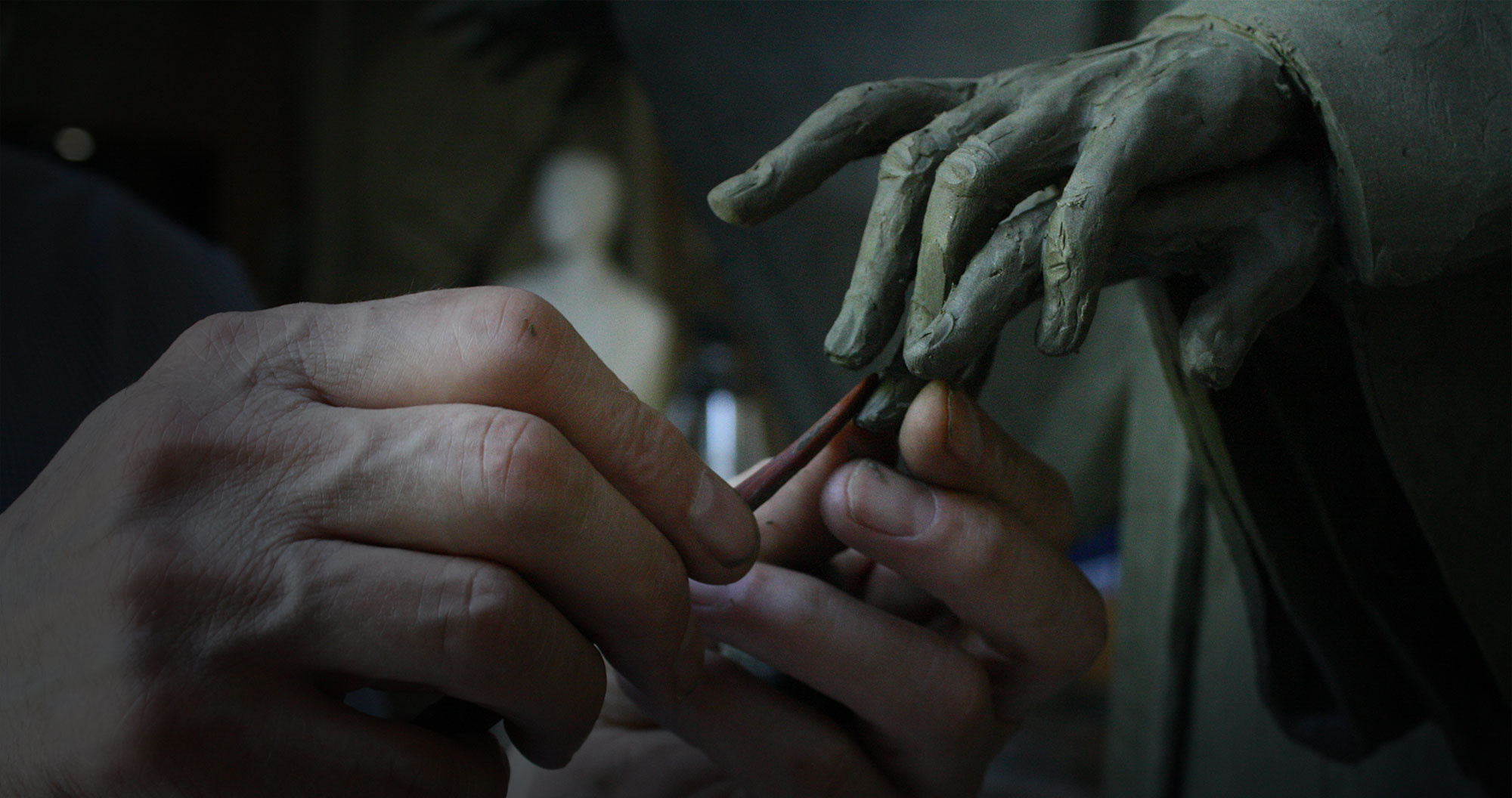For years the Villages pursues with his sculpture, the de-construction of the myth as the goal of a research plastic original you define in the turmoil of conceptual art and is directed towards a clash brave, in no uncertain terms, between the absoluteness of the image and the richness of the intellectual process that originates it. If you were to choose images to illustrate “The marriage of Cadmus and Harmony, Roberto Calasso, the book more deeply, “current”, written in Italy in the last decade, only the images of Villages would be secretly recorded. Around the mid - ’80s, moving from the premises of a classicism, romantic, mindful of Boklin and Savinio, Villages comes to its more personal, and at the same time by the classical ideal: a soft grace in the treatment of the surfaces, which binds to the continuous re-emergence of a plastic theme – the fusion of two or three living bodies which possess at least one limb in common – the real result alchemy of a merger in which shine consummate technical skill and obstinate rigour. These approaches of bodies well composed shy away from the finiteness and self-sufficiency. Where the member will remain unfinished, the marble germinates landscapes. Trees and houses in opposition to the life unit of the bodies of the “live” additive of the landscape, understood as the revenge of the chaos, or at least of an order less rigorous than the needs of the organic, which governs the figure.
The apparent pleasantness of this sculpture, so charged with dramatic accents, but so inclined to engage in the treatment of the surfaces with the classic moment of “grace” sculpture (from Oak to Michelangelo to Bernini), it could not, however, mislead on the address of the research of the Villages that used the “grace” as an ingredient of an explosive mixture, the center engine was not so much nostalgia, and myth as the finding that the re-reading “moderna” of myth, starting with Freud, it is a necessary moment of self-consciousness and the critique of our time. No wonder, therefore, that the Villages has suddenly abandoned the grace to the advantage of a strength that emanates from matter and pervades human bodies more enclosed space, but avvolgentisi each other, one above the other, with members that expand and collide, shoulders gigantic caballero, arms outstretched and heads carved out space made with a material that seems to lava burned.
We are facing a classic upset to which the art of moderates has accustomed us, by Klimt Klinger to Moreau. The vibrating matter on the other hand, makes one think of the sculpture of another “classic” irreducible, the great Arturo Martini. If this classicism apocalyptic might make you think of the nostalgia of symbolism that has opened in our century, “in search of heroes, lost, Villages moves along a line more daring feel the charm of the grand manner of the ’30s and contamination concept. As the art of the end of the century that Villages is really about – and the results are of great importance – an art that crosses classes and complaints, returns, and drop-outs, managing to give us a summary extraordinarily mature, big rovello that has powered everything a “side bleeding” of-the-art moderna, a relationship with the history of”art " in the mirror”, to use a happy formula Maurizio Calvesi. For those who thought that the structural research of the bodies concerned with was a sort of game to school in which the technical invention of Villages that have exhausted itself, this profound modification of its making can serve to retry the fact that the problem of Villages is not reducible to a technical problem, even if the technique of the sculpture is his way of being and thinking. Villages chases a significant shape that, through the myth explores the current conditions; making, every time you adventure in search of a story, a round trip that brings him back from the past to the present and allows him to express his / her preferences, to enrich his fantasy world, to gain greater experience in the performance of matter and light. Part of this circular motion of the co-presence in the same image of the subject formed, anthropomorphic, and of the matters stated in the abstract as a volume, as an obstacle, as a residual unburned an operation that is not the ideal one to free the material from the form and then find out the images inside of the boulders, but to anchor the figure “positive” caught in the movement of a figure “negative”, the inertial, that is, the sum, justifying them, it gives them the sense of the need.
Paolo Portoghesi
